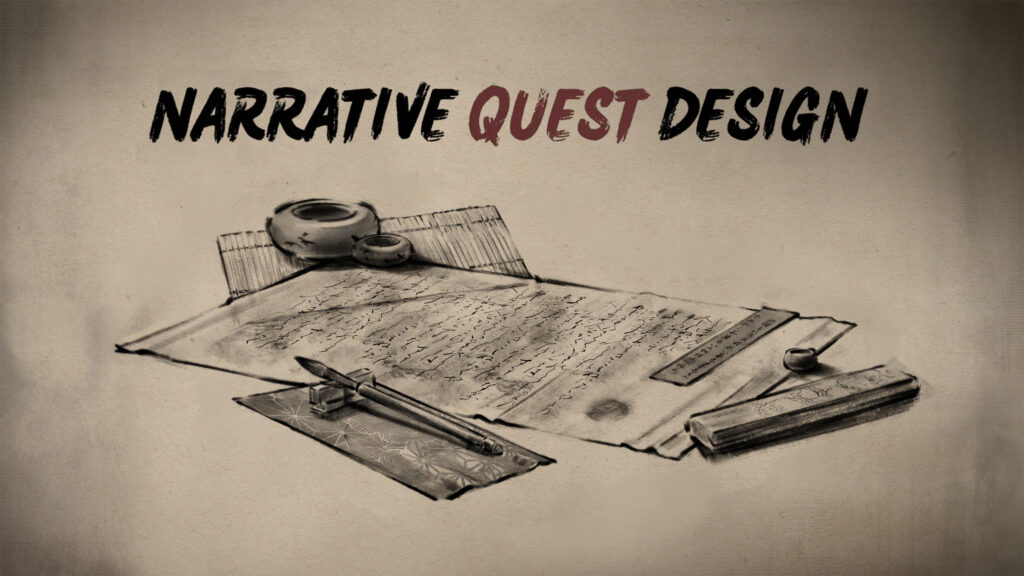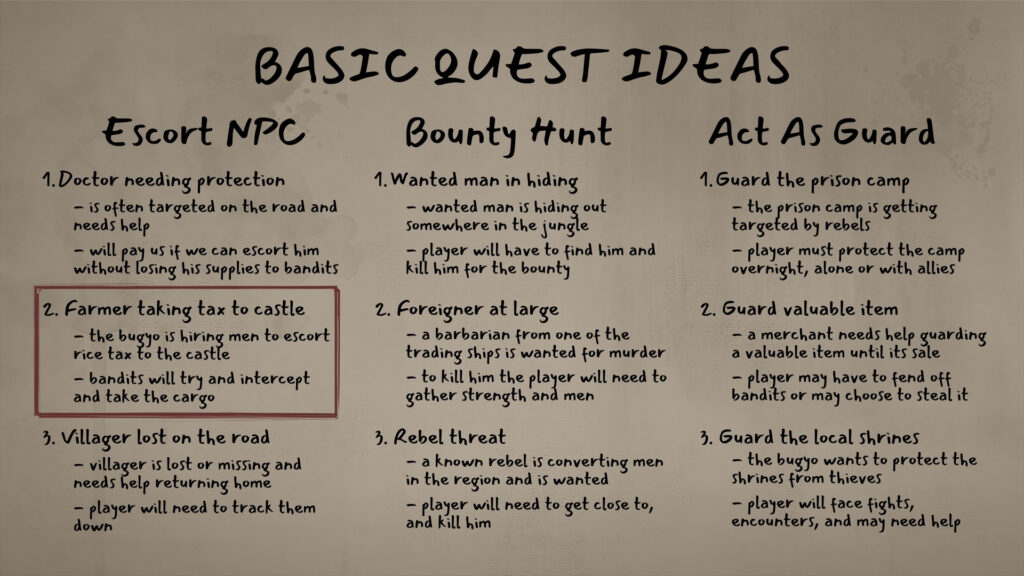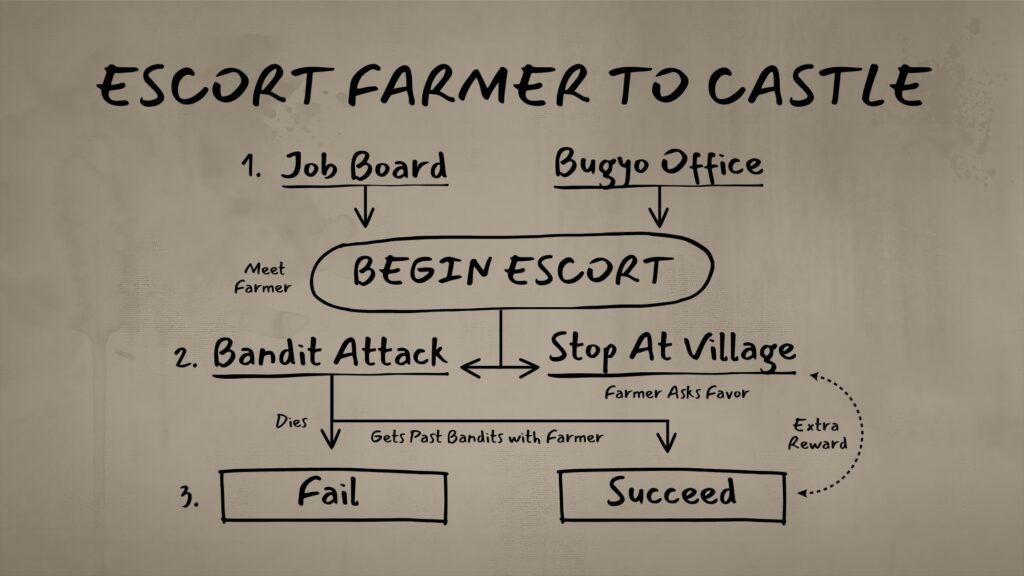
In two previous blog posts, we showcased our narrative design tool Rashomon and explained some of its technical capabilities. However, when it comes to Tale of Ronin, our team’s process starts long before the creation of dialogs or graphs. Today, we will guide you through some of the more detailed steps our designers take when crafting quests in Tale of Ronin.
Before beginning any planning, our designers are first tasked with understanding the parameters of the game, researching Japanese history and culture, and staying up to date with any updates or changes within the story. It’s important to keep these details in mind when planning for in-game quests and events.

The first step in the planning process is an an ideas phase. By jotting down any and all possibilities, good or bad, we are able to begin to refine what avenues to explore further. This often involves using flowcharts, bullet point lists, and other collaborative tools like Notion to quickly outline ideas and share with other designers to get feedback.
Each quest has requirements that need to be met. Our narrative designers must touch on these requirements in their ideas, constructing the basic skeleton of a design. For the purposes of this blog post, we will use the second ‘Escort NPC’ idea from the example image above as an example to explain what this means.
An Intro Point or Quest Giver:
Multiple entry points need to be available for each quest, from a NPC giving it to the player, to the player learning about it from different means. For the quest to escort a farmer and his tax cargo to the castle, we would consider where a ronin might learn about or get assigned this sort of quest.
In some villages within Tale of Ronin there are local job boards, so that would be a logical entry point for this sort of quest. Also, considering this is a job that is in the interest of the local government, officials at any districts bugyo office might also know of these jobs.
Quest Obstacle(s):
From information gathering, to survival challenges, or even combat, obstacles are a key part of making a quest enjoyable and interesting. The main obstacle in our example is to meet the farmer and successfully bring him and his tax cargo to the castle.
Therefore, the main situation found in the quest is a ronin escorting a farmer with his tax. An immediate obstacle to consider is the potential for the cargo to be attacked. Bandits and other criminals would want anything valuable and could attack during the escort.
Obstacles also do not always have to be obvious, either. For instance, the farmer might want to deviate off the quickest route to the castle in order to stop at a village for personal reasons. If the player chooses to go out of their way to do this, taking longer to complete the quest as a result, then after the job the farmer might present the player with additional resources as a gift.
Difficulty Level:
Each quest should assess if it offers an appropriate level of challenge, making sure it is not too easy or too hard. In our example, we are building a simple quest that should not be overly difficult to complete.
Supporting Encounters:
Quests and their contents should be reflected in the game world. This needs to be planned for via events and NPC interactions. Thinking about our farmer being escorted, this could open up opportunities for other farmers or villagers to mention how they feel about taxes or the government. Feeding in information about bandits targeting cargo on the road is also a nice way to foreshadow and support our planned obstacles.
Death Loop:
In Tale of Ronin, when a player dies, their ronin is permanently killed and the player returns as a new ronin within the same world. This means the past ronin’s actions will have consequences, and different routes to the same quests need to be considered. If the bandits attacked and killed the player and farmer during this quest, it may not be available in the future. Locals may also speak about the player’s death and worry about taking their own taxes to the castle.
Resolution:
Each quest will need to have one or multiple different endings or resolutions that culminate in either success or failure.
For escorting a farmer to the castle, the resolutions are fairly straight forward: either the player reaches the castle with the farmer and his tax cargo, or they die before being able to do so. One success and one failure.

After all of these aspects are considered and the ideas are approved, our narrative designers are able to shift into the next phase: planning and design. This requires expanding on the ideas and documenting all of the details in ways that are easy to follow and understand. Once the plan for the quest is finalized it will be included into the production line, play-tested, tweaked, and then added to the game before being gradually expanded on through new layers and iterations.
Our team is excited to share more glimpses behind the curtain as we get closer to the release of Tale of Ronin. Make sure to follow us on Facebook, Twitter, and Instagram to get notified for our latest news!